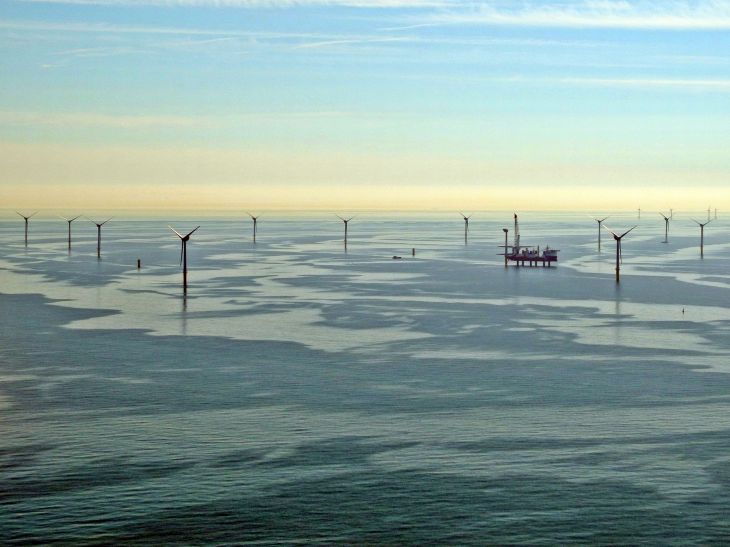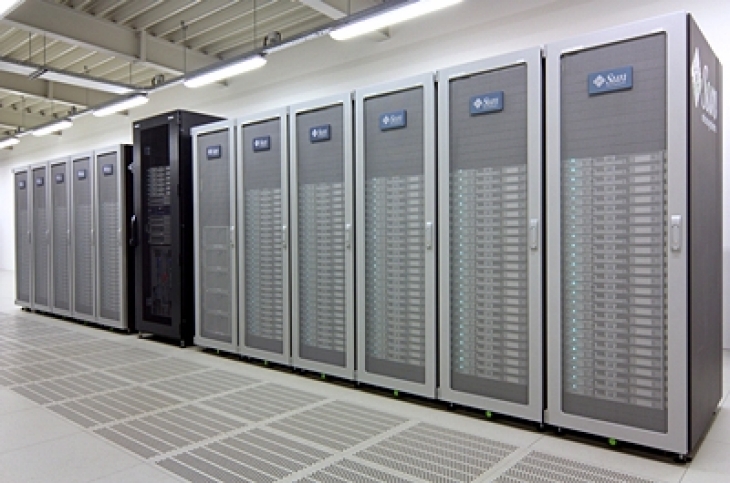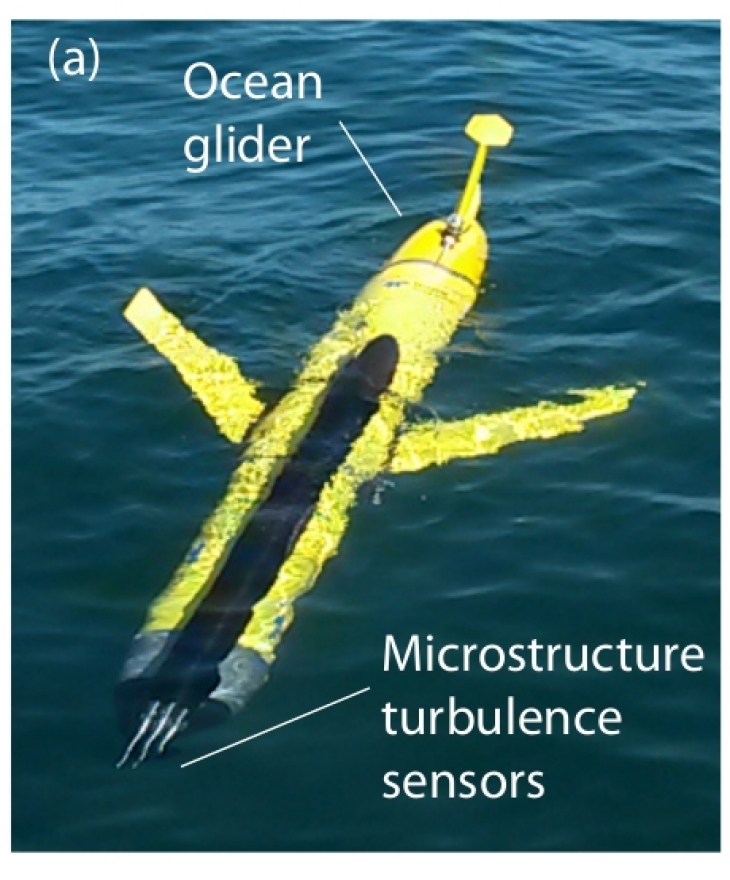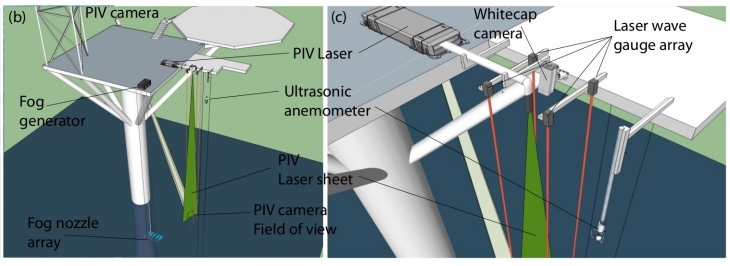Research & Projects
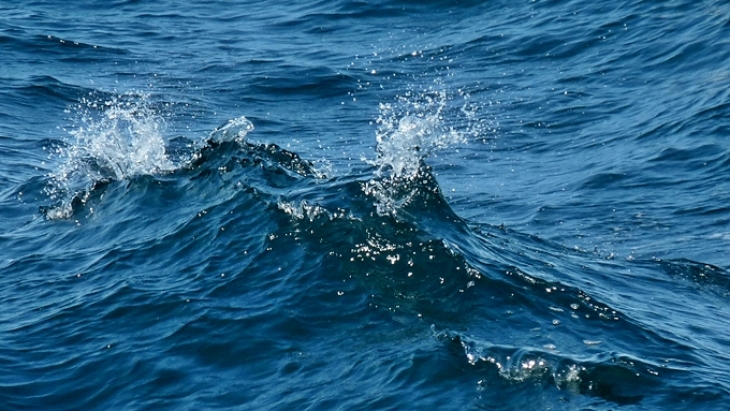
-Image: Ina Frings/Hereon-
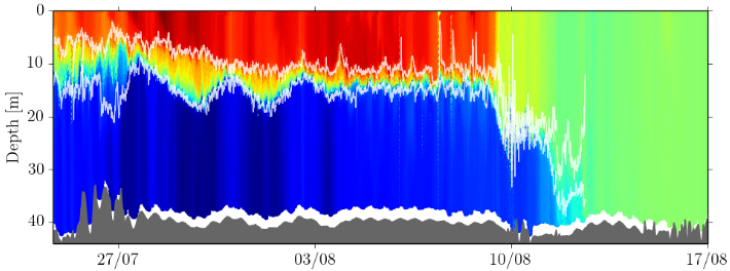
Image of a transition zone between stratified and mixed conditions in the North Sea 2014. -Image: Jeff Carpenter/Hereon-
In large portions of the North Sea during summer, increased heat input leads to the development of a warm upper layer that is somewhat disconnected to the cooler bottom waters by a relatively thin transition zone called the thermocline.
This seasonal stratification is vital in determining the growth of phytoplankton, and therefore the food supply to the marine food web. In addition, the stratification also heavily influences the amount of particles suspended in the water (suspended sediments), as well as the formation of low-oxygen "dead zones". However, predicting the development and evolution of the stratification is critically dependent on understanding the amount of turbulence that is present in the North Sea. This turbulence is responsible for mixing away the stratification, and can be generated through a number of different processes.
The goal is to understand these processes and to use this knowledge to model and predict possible changes. These changes could occur from, for example, the installation of offshore wind farms, or increasing temperatures due to climate change.
The Small-scale Physics and Turbulence group aims to quantify the turbulence that is generated by processes such as storms, or by the tides moving water over the sea bed. Turbulence generated in this way contributes to the mixing of the stratification and an increase in sediment suspension as particles are dragged up from the sea bed. Of particular interest are the turbulent mixing processes that are acting directly within the thermocline.
Ocean Glider
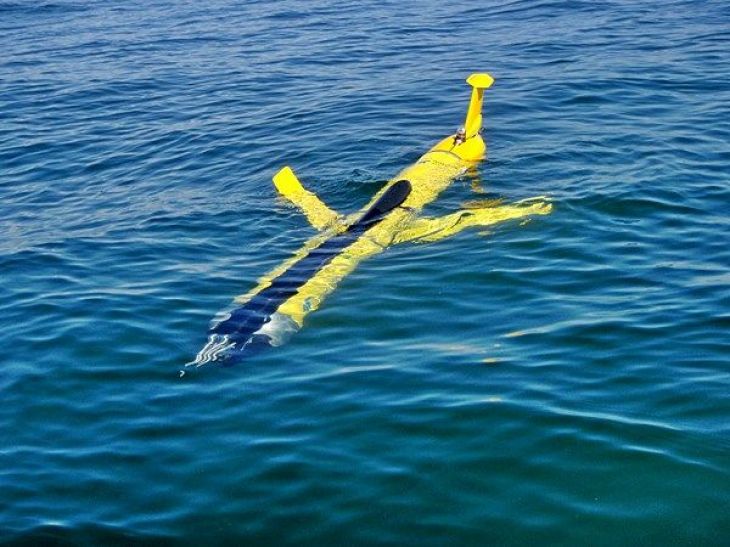
An ocean glider is deployed for a measurement campaign. -Image: Raimo Kopetzky/Hereon-
The research group Small-scale Physics and Turbulence is currently using ocean gliders to measure turbulent processes in the North Sea and other regions.
Ocean gliders are underwater vehicles that can be operated remotely via satellite connection to collect long-term and long-range measurements. They can be deployed for periods of many weeks at a time since they are designed to operate with a very low power consumption.
The ocean gliders sample the sea vertically by using a pump to adjust their buoyancy, and wings to propel them forward while diving and climbing, thus moving in a saw-tooth pattern through the ocean. They provide an ideal platform for turbulence measurements.
Ocean gliders have traditionally been used in deeper waters. Our research group, however, successfully operates them in the shallow and energetic North Sea coastal region though the heavy traffic provides significant operational challenges.
More
Beneath the Surface of the North Sea. The Institutes of Coastal Research at the Helmholtz-Zentrum Hereon research the North Sea in 3D.
(Article on ESKP)

